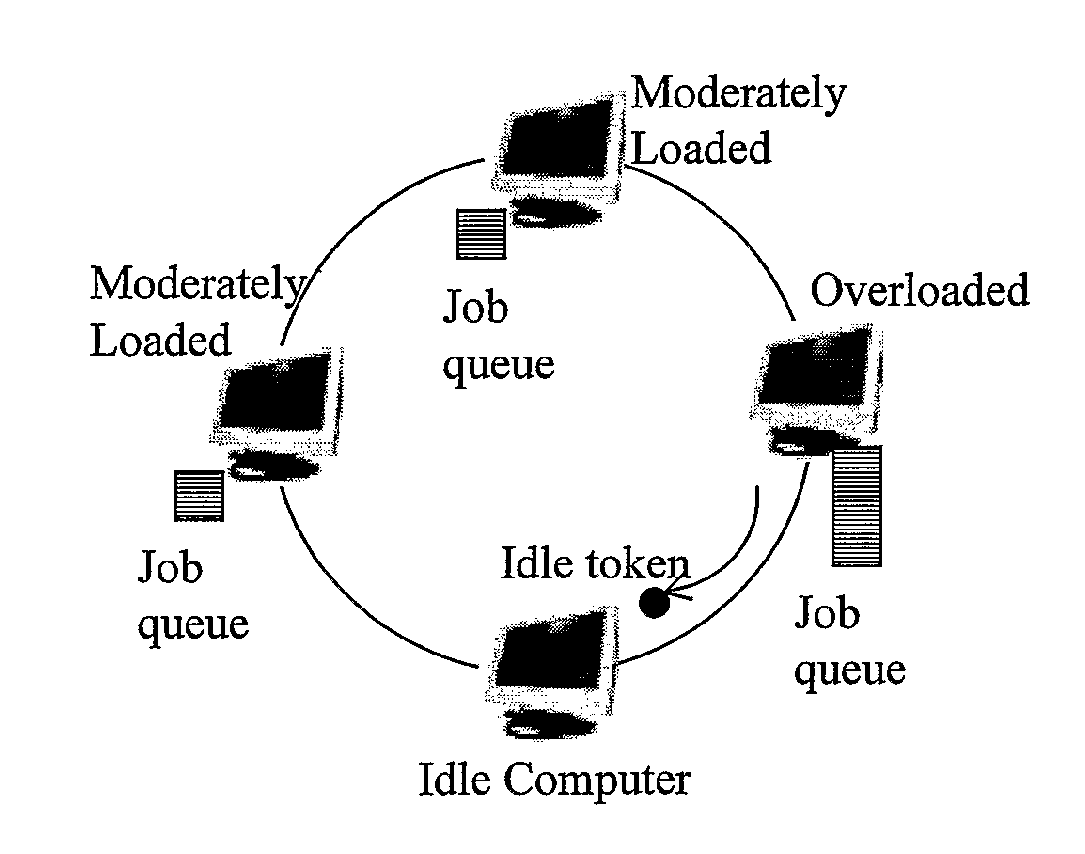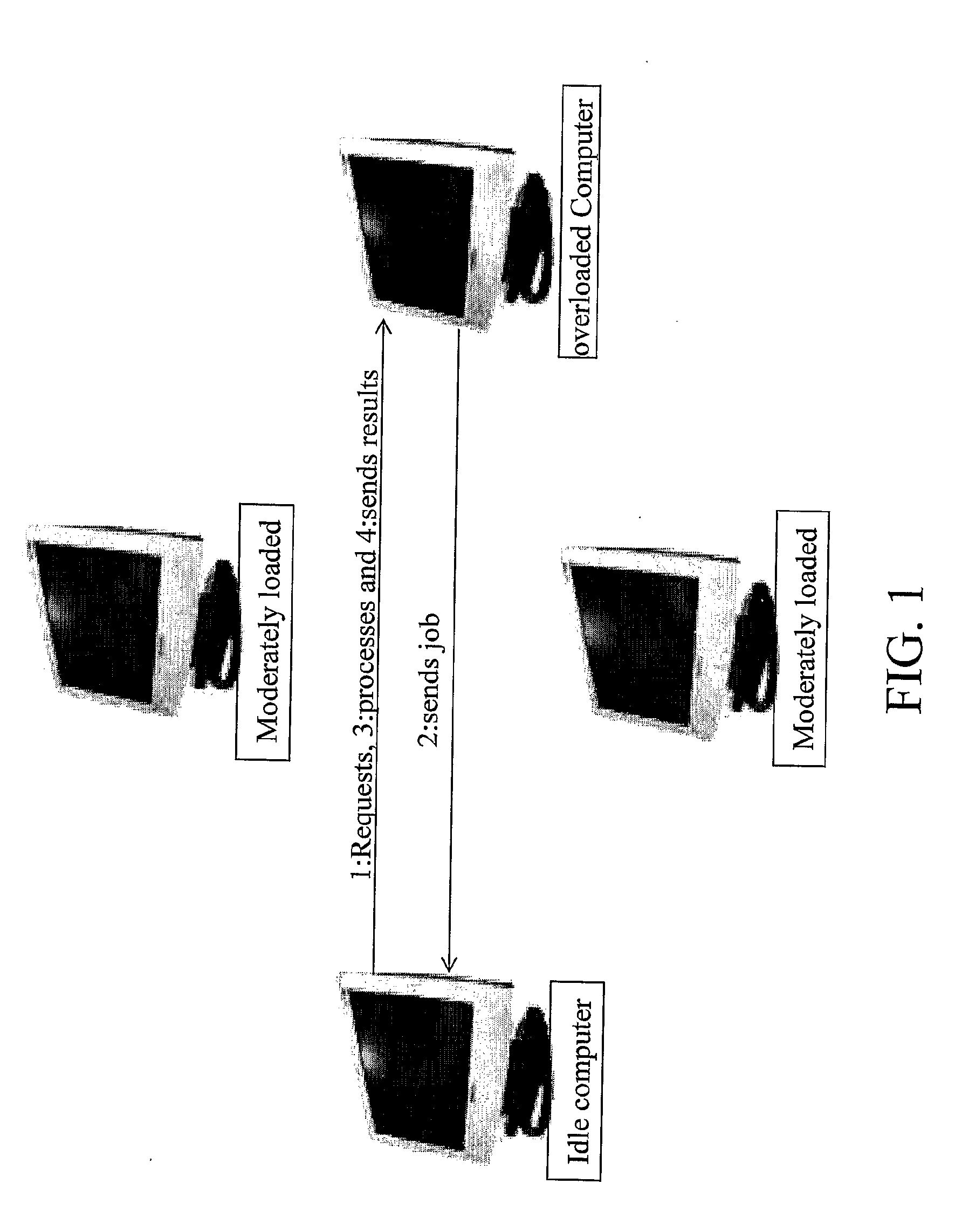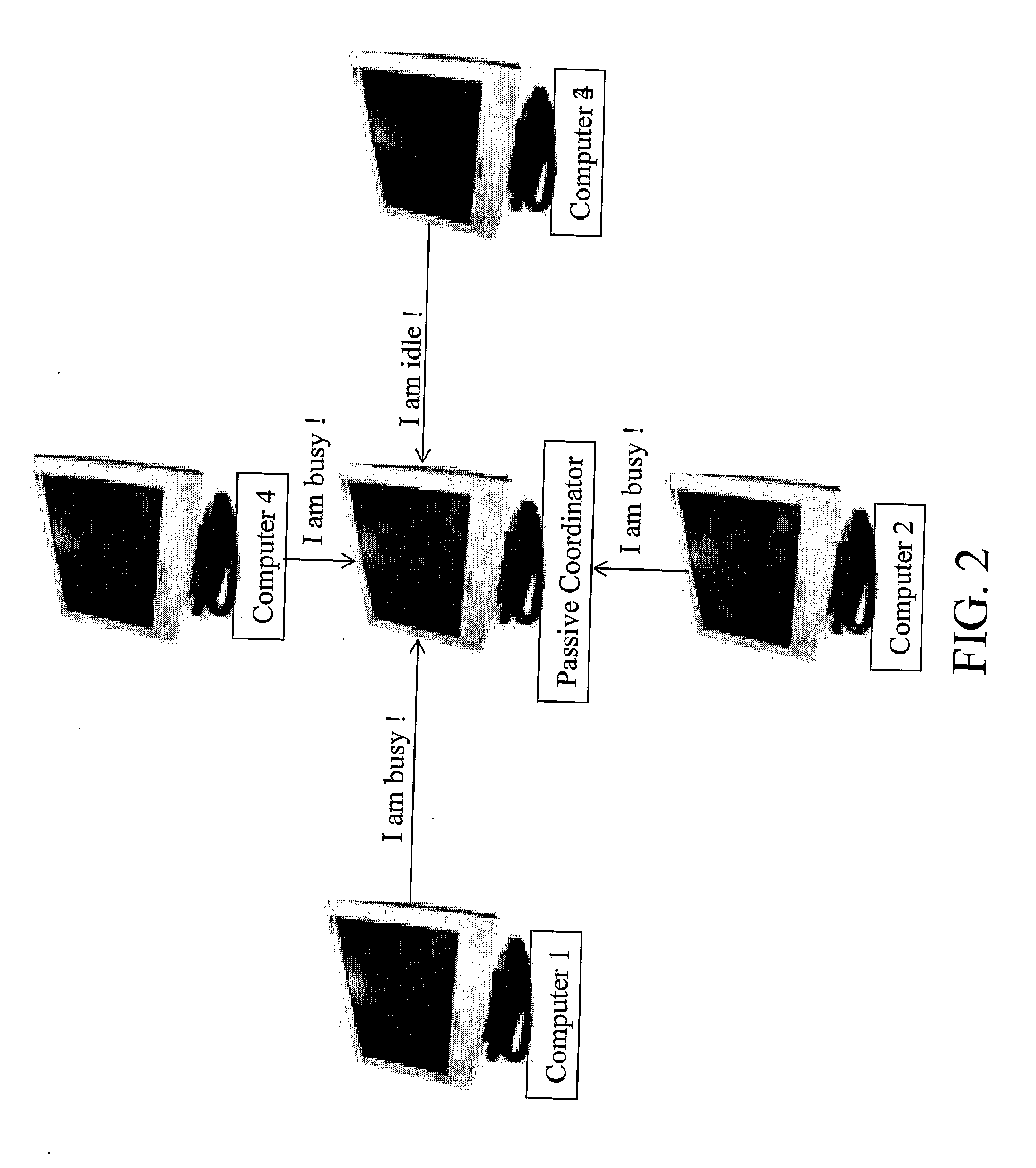Method and System for Load Balancing in a Distributed Computer System
a computer system and load balancing technology, applied in the field of distributed computer systems, can solve problems such as centralized dependency, whole system down, and (over) load on timeservers
- Summary
- Abstract
- Description
- Claims
- Application Information
AI Technical Summary
Problems solved by technology
Method used
Image
Examples
Embodiment Construction
[0034]Various embodiments of this invention provide a method and system for load balancing in a distributed computer system, especially for use in an entrepreneur company. However, the embodiments are not limited and may be used in connection with various applications such as, military applications, etc.
[0035]FIG. 5 shows an embodiment of a distributed computer system according to this invention, wherein the system comprises a plurality of computers connected in logical ring architecture based on predetermined criteria. Examples of such criteria include physical distance, processor-id, priority of the processor, etc. A special bit pattern hereinafter referred to as “token” circulates through the logical ring as soon as the distributed computer system restarts. The token may include but not limited to, an idle token indicative of idle state of a computer, a busy token indicative of an overload state of a computer and a time synchronizing token indicative of a time synchronous to all ...
PUM
 Login to View More
Login to View More Abstract
Description
Claims
Application Information
 Login to View More
Login to View More - R&D
- Intellectual Property
- Life Sciences
- Materials
- Tech Scout
- Unparalleled Data Quality
- Higher Quality Content
- 60% Fewer Hallucinations
Browse by: Latest US Patents, China's latest patents, Technical Efficacy Thesaurus, Application Domain, Technology Topic, Popular Technical Reports.
© 2025 PatSnap. All rights reserved.Legal|Privacy policy|Modern Slavery Act Transparency Statement|Sitemap|About US| Contact US: help@patsnap.com



